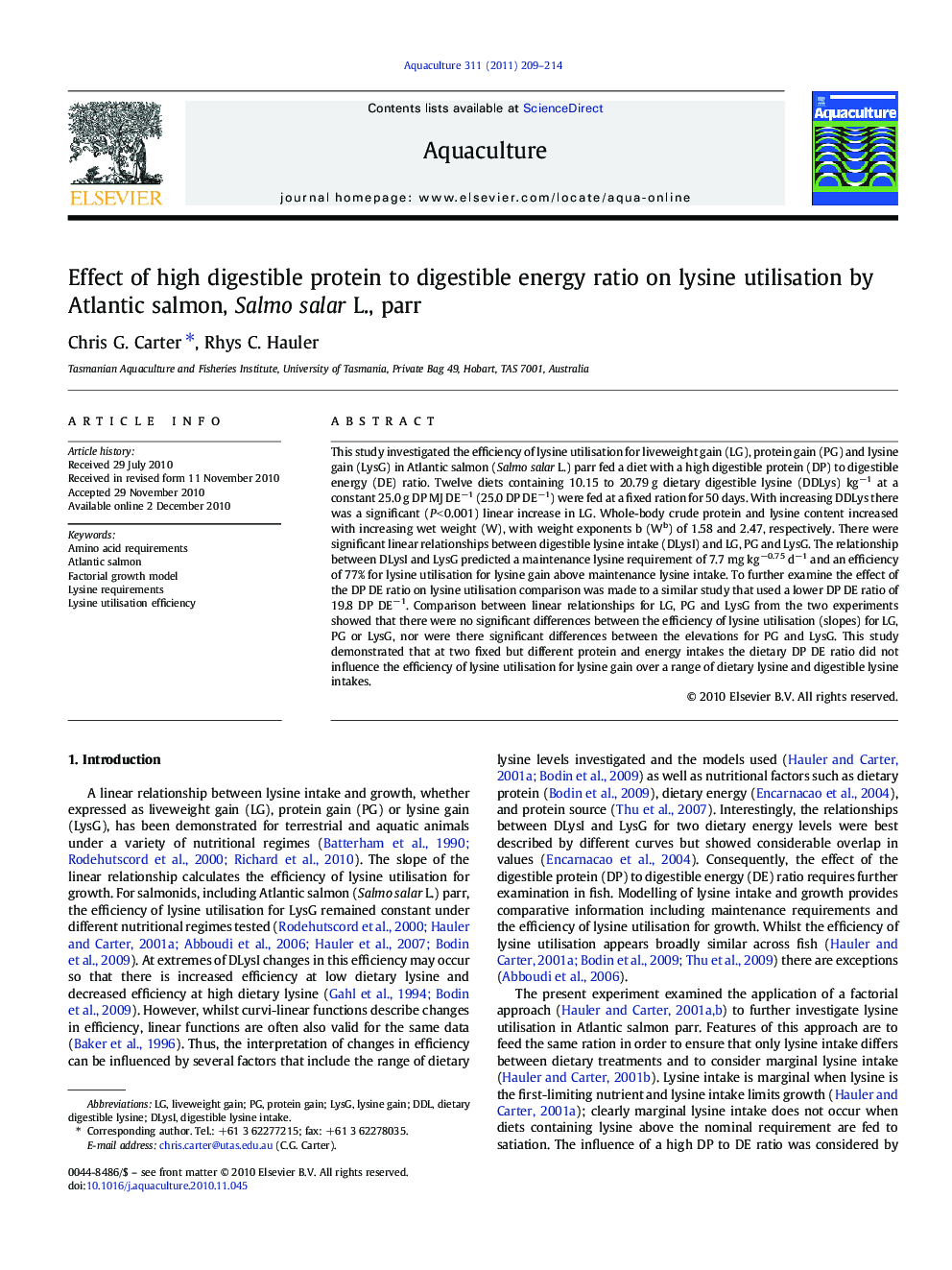| Article ID | Journal | Published Year | Pages | File Type |
|---|---|---|---|---|
| 8496058 | Aquaculture | 2011 | 6 Pages |
Abstract
This study investigated the efficiency of lysine utilisation for liveweight gain (LG), protein gain (PG) and lysine gain (LysG) in Atlantic salmon (Salmo salar L.) parr fed a diet with a high digestible protein (DP) to digestible energy (DE) ratio. Twelve diets containing 10.15 to 20.79 g dietary digestible lysine (DDLys) kgâ1 at a constant 25.0 g DP MJ DEâ1 (25.0 DP DEâ1) were fed at a fixed ration for 50 days. With increasing DDLys there was a significant (P < 0.001) linear increase in LG. Whole-body crude protein and lysine content increased with increasing wet weight (W), with weight exponents b (Wb) of 1.58 and 2.47, respectively. There were significant linear relationships between digestible lysine intake (DLysI) and LG, PG and LysG. The relationship between DLysI and LysG predicted a maintenance lysine requirement of 7.7 mg kgâ0.75 dâ1 and an efficiency of 77% for lysine utilisation for lysine gain above maintenance lysine intake. To further examine the effect of the DP DE ratio on lysine utilisation comparison was made to a similar study that used a lower DP DE ratio of 19.8 DP DEâ1. Comparison between linear relationships for LG, PG and LysG from the two experiments showed that there were no significant differences between the efficiency of lysine utilisation (slopes) for LG, PG or LysG, nor were there significant differences between the elevations for PG and LysG. This study demonstrated that at two fixed but different protein and energy intakes the dietary DP DE ratio did not influence the efficiency of lysine utilisation for lysine gain over a range of dietary lysine and digestible lysine intakes.
Related Topics
Life Sciences
Agricultural and Biological Sciences
Aquatic Science
Authors
Chris G. Carter, Rhys C. Hauler,
